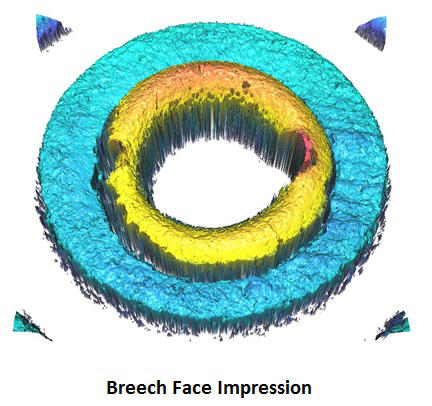Summary
The NIST Ballistics Toolmark Research Database is an open-access research database of bullet and cartridge case toolmark data. This database will:
- foster the development and validation of measurement methods, algorithms, metrics, and quantitative confidence limits for objective firearm identification
- improve the scientific knowledge base on the similarity of marks from different firearms and the variability of marks from the same firearm, and
- ease the transition to the application of three-dimensional surface topography data in firearms identification.
Description
The database contains traditional reflectance microscopy images and three-dimensional surface topography data acquired by NIST or submitted by database users. The goal is a collection of data sets that: 1) represents the large variety of ballistic toolmarks encountered by forensic examiners, and 2) represents challenging identification scenarios, such as those posed by consecutively manufactured firearm components.
The data is organized into ballistic toolmark studies. Each study contains toolmark data of bullets or cartridge cases obtained from controlled test fires involving one or more firearms. Currently, the evaluated specimens are limited to "pristine" bullets or cartridge cases, i.e., specimens with no major deformation or fragmentation, obtained from handguns. Studies of interest include:
- consecutively manufactured firearm components
- the same firearm firing many rounds of ammunition (toolmark persistence/decay)
- the same firearm firing different brands of ammunition
- firearms known to present identification challenges
- firearms representing the major toolmark class/subclass characteristics.
Three-dimensional topography data is provided in the X3P data format. Two-dimensional reflectance microscopy data is provided in the lossless PNG format. Measurement data is provided as raw data. Depending on the nature of the firearm identification approach, users may have to apply data processing operations such as data trimming, outlier rejection, edge detection, leveling, form removal, and filtering. Each study is accompanied by a spreadsheet with meta data (data about the data) describing the study, properties of the firearms, properties of the specimens, and measurement parameters. For more information regarding the data formats or the meta data, please visit the Data Format and Meta Data page. For cartridge cases, our focus is on toolmarks generated by the firearm's breech face and firing pin.
For cartridge cases, the regions of interest include the breech face and firing pin. The respective data sets contain:
- three-dimensional topography data and two-dimensional reflectance microscopy images (ring light and 6 o'clock side light) of the breech face impression, which may include the firing pin aperture shear, and
- three-dimensional topography data and two-dimensional reflectance microscopy images (ring light) of the firing pin impression.
3D Topography of Breech face and Firing Pin Impressions


2D Reflectance Microscopy Images




For bullets, our focus is on tool marks generated by the barrel's rifling lands. The respective data sets contain three-dimensional topography data of the land engraved areas.
Disclaimer: Please note that mention of brand names does not imply endorsement by NIST.

